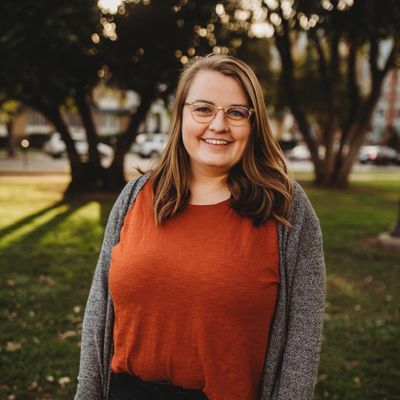Today was our last day at the dig. The last chance to pull something interesting out of the ground, last opportunity with a pick, a brush, and a pan as my tools of discovery.
As I carefully brushed around what seemed like a floor formation of pottery sherds and cobblestones, almost by accident, I unearthed what looked like a knucklebone—actually a bone in the ankle. At first, I didn’t recognize what I had—old bones are as brown and textured as smooth wood. Then it hit me. I might be holding an astragalus, a game piece usually made from an unmodified ankle bone, though some were polished or ground, and some were filled with metal plugs. Astragali have also been found as replicas in ceramic, marble, or other materials.
 [Astragali | courtesy Picryl, Public Domain]
[Astragali | courtesy Picryl, Public Domain]
 Knucklebones were used in games of chance, but in the ancient world, games were seen as influenced by deities, nothing was merely chance, so some Astragali had inscriptions on them. (That link takes you to Wikipedia.) We even have a Proverb in the scriptures explaining this very thing, “The lot is cast into the lap, but the decision is the Lord’s alone.” (Proverbs 16:33, RSV) Later, in Acts, the remaining disciples cast lots to decide who would replace Judas as the twelfth apostle, most likely trusting in this text.
Knucklebones were used in games of chance, but in the ancient world, games were seen as influenced by deities, nothing was merely chance, so some Astragali had inscriptions on them. (That link takes you to Wikipedia.) We even have a Proverb in the scriptures explaining this very thing, “The lot is cast into the lap, but the decision is the Lord’s alone.” (Proverbs 16:33, RSV) Later, in Acts, the remaining disciples cast lots to decide who would replace Judas as the twelfth apostle, most likely trusting in this text.
[Faience astragalus | The Children’s Museum of Indianapolis [CC BY-SA 3.0 (https://creativecommons.org/licenses/by-sa/3.0)]
The use of astragali as gaming pieces goes as far back as four thousand years ago, and quickly became widespread. Sophocles claimed the invention of astragali went to the mythical figure Palamedes, who taught it to his Greek countrymen during the Trojan War. Both the Iliad and the Odyssey contain references to games similar to knucklebones.
However, both Herodotus and Plato actually point to a foreign origin of the game. Plato named the Egyptian God Thot as the inventor, whereas Herodotus wrote about the Lydians originating the game during a time of famine. Thot shows up in Akko as a small monkey amulet, probably carried by those who labored in the forge, as Thot was, among other things, a protector of those who worked with iron and furnaces. Lydia is one of the regions known for textiles in the ancient world, and would have been closely linked with Akko, which operated a robust trade in purple dye. Several astragali have actually been found at Akko, some with drilled holes in them.
 As a matter of fact, we have kept a form of knucklebones to this day—we call them “jacks,” now, but they are essentially the same as the astragali of antiquity. As I dropped my possible astragalus into my specially labeled bag for bone finds, I wondered whether it was a gaming piece, or just the leftovers from some ancient meal.
As a matter of fact, we have kept a form of knucklebones to this day—we call them “jacks,” now, but they are essentially the same as the astragali of antiquity. As I dropped my possible astragalus into my specially labeled bag for bone finds, I wondered whether it was a gaming piece, or just the leftovers from some ancient meal.
[Jacks | The Children’s Museum of Indianapolis [CC BY-SA 3.0 (https://creativecommons.org/licenses/by-sa/3.0)]
Tomorrow, we’ll sweep the entire site, then our survey archaeologist, Jamie, will take aerial photos with the drone. He’ll later use photogrammetry[1] to create a 3D model of the site, and each area. Saturday, we’ll attempt to wash all 400 buckets of pottery sherds—yes, that is not hyperbole, or even exaggeration. That is the running count, at this moment, despite daily two-hour pottery washing sessions. Saturday is Shabbat in Israel, so we’ll wash pottery in the morning, and we’ll get the afternoon off—that is to say, everyone who is not responsible for some aspect of the excavation.
I, most likely, will be inputting the data for the survey, being a pottery scribe, and checking through all my work. Since not all the pottery will be read by the time Dave and I leave Monday, I won’t be able to close the books. But, I will have brought the survey project much farther along than they’ve had in the recent past.
Sunday, we head back up to the excavation one last time to lay down somewhere in the region of 3,000 sandbags on everything, to protect it, and to protect others from falling in. After that, a quick shower, and off to the mayor’s office where all 50+ students and staff will be hosted at a reception in our honor. We’ll finish the day with feasting at Uri Buri, voted best restaurant in the Middle East in 2016.
[1] “Photogrammetry is the science of making measurements from photographs. The input to photogrammetry is photographs, and the output is typically a map, a drawing, a measurement, or a 3D model of some real-world object or scene.” (Wikipedia)
